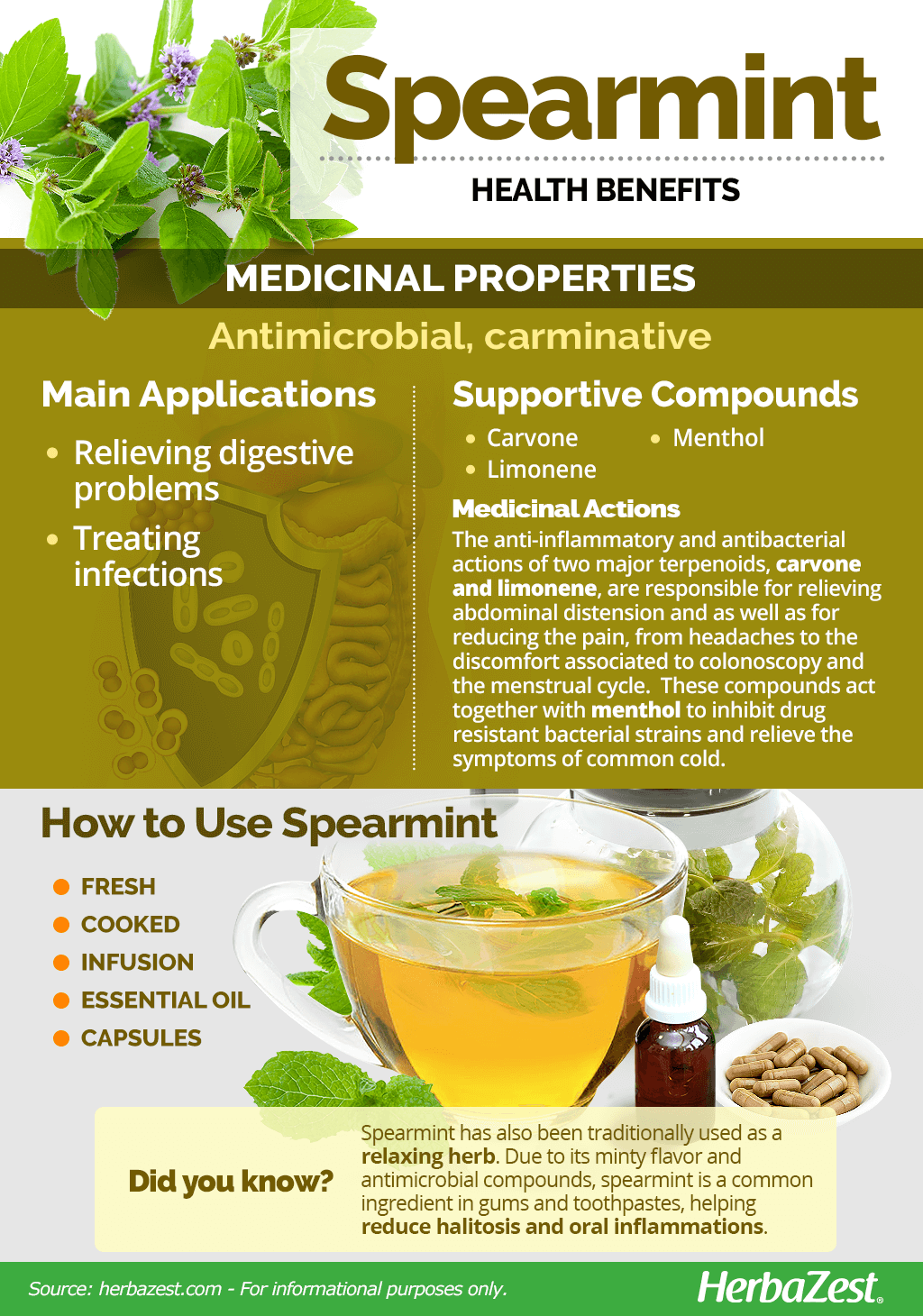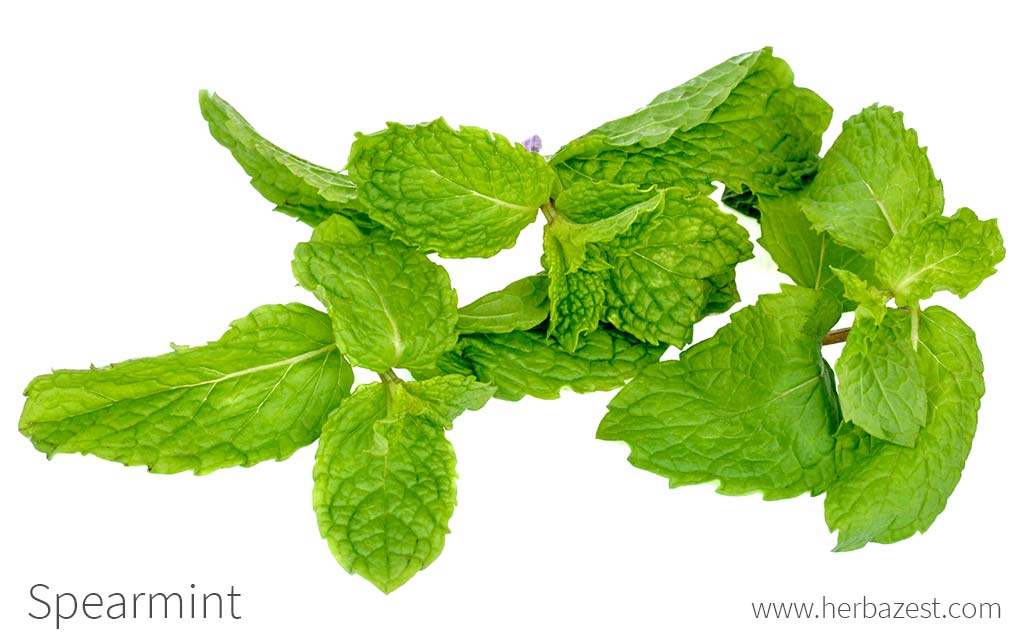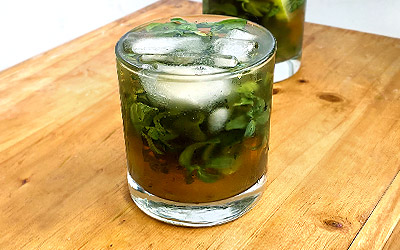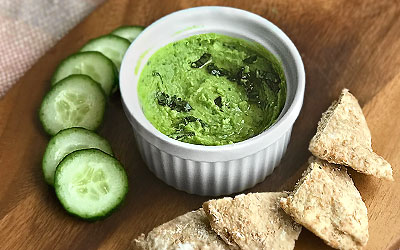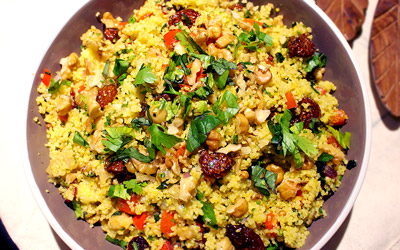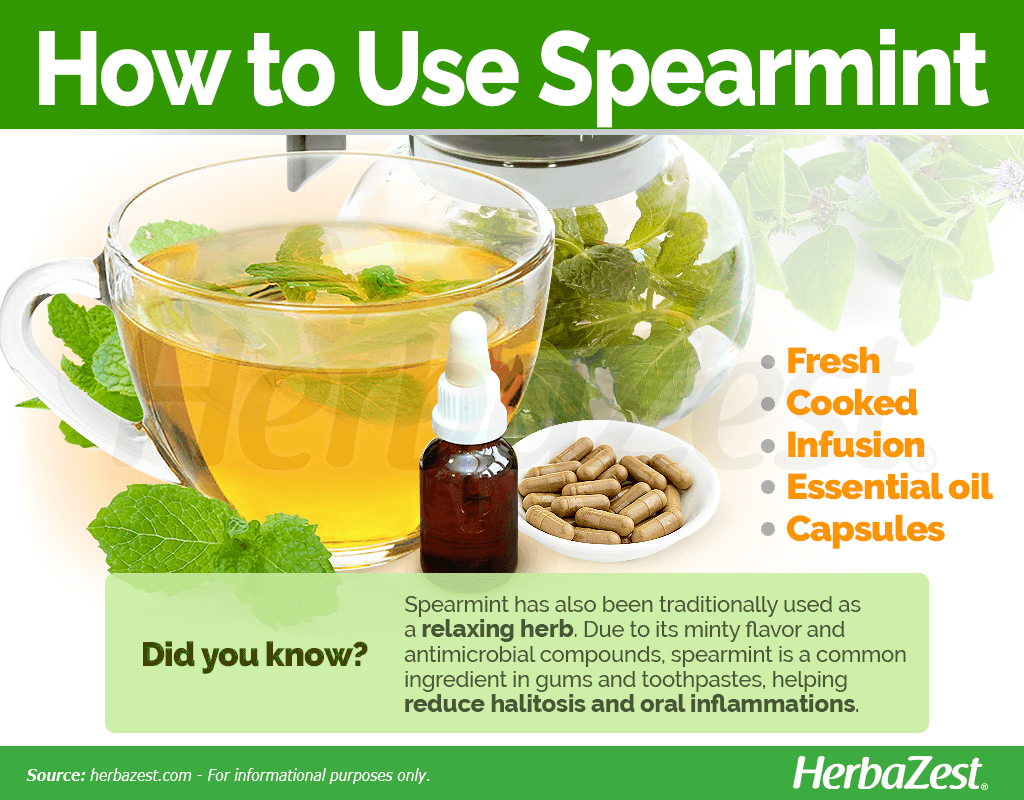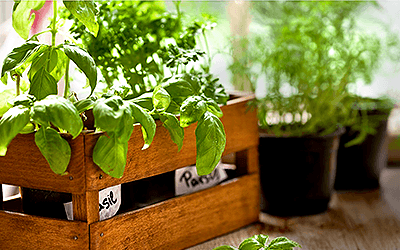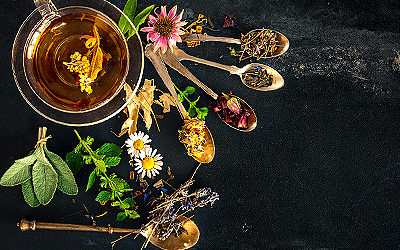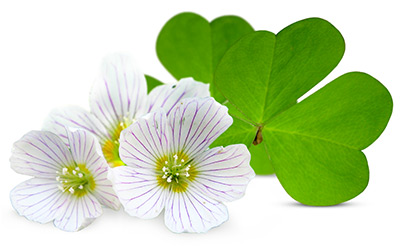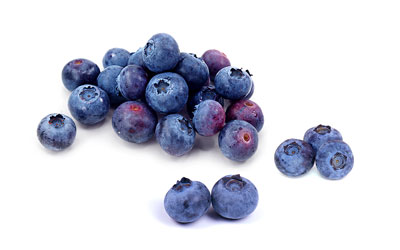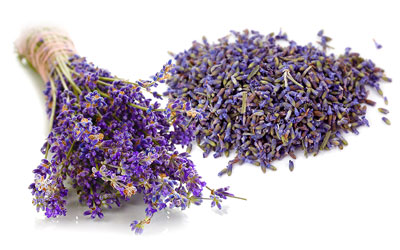Native to Europe, spearmint can now be found growing all over the world, including the United States. Because of its fresh, bright flavor and strong scent, it has been used for centuries to treat gastrointestinal problems and as a breath freshener. Nowadays, spearmint still a valuable herb, with a variety of culinary, medicinal, and industrial applications.
Spearmint Medicinal Properties
Health Benefits of Spearmint
The antimicrobial and carminative properties of spearmint have found several medicinal uses; however, the most popular and studied spearmint benefits are:
Relieving digestive problems. The carminative properties of spearmint can alleviate acute and chronic gastrointestinal problems, such as indigestion, flatulence, and stomach aches.
Treating infections. Spearmint has proven effective for inhibiting a variety of bacterial strains affecting gut's health as well as treating the common cold, cough, and oral infections.
Additionally, spearmint has been useful for treating and preventing gall bladder and bile duct diseases, relieving pain, and easing muscle crams.
Spearmint has also been traditionally used as a relaxant herb.
How It Works
Spearmint oil boasts of at least 50% carvone, the ingredient that supplies the herb its distinct, minty smell, and limonene. The anti-inflammatory and antibacterial actions of these two terpenoids have been shown to relieve abdominal distension and flatulence caused by indigestion as well as pain associated to colonoscopy and the menstrual cycle.1 Other spearmint active ingredients, found in small quantities, include pulegone, menthol, flavonoids and tannins.
Spearmint essential oil contains significantly less menthol that other Mentha species, although it remains enough to provoke an antimicrobial action that have been proven effective to inhibit antibiotic-resistant strains, such as H. pylori, Salmonella, E. coli, and Staphylococcus aureus2, as well as a decongestant effect that helps treating the symptoms of respiratory problems, including cough and colds.
Spearmint oil helps improve halitosis and reduces mouth inflammation.3
Other herbs with similar carminative and antibacterial properties are muña, peppermint, marjoram, and thyme.
Spearmint Side Effects and Cautions
While oral consumption of spearmint, in the form or herbal tea and infusion, is considered to be generally safe, the same spearmint compounds that kill bacteria and reduce inflammation can affect hormone levels in the body, including testosterone. In rare cases, it might cause an allergic reaction when applied directly to the skin. There is not enough information about the safety of spearmint during pregnancy and lactation so it is wiser to consume only culinary amounts during these stages.
People with kidney disorders and liver disease should carefully regulate the ingestion of spearmint, since it can worsen organ damage. Additionally, spearmint may worsen the side effects of medications that affect liver function and increase the power of sedative supplements, like the ones containing hops, kava, L-tryptophan, melatonin, and valerian, causing further sleepiness and slowed breathing.
- Medicinal action Antimicrobial, Carminative
- Key constituents Carvone, limonene, menthol
- Ways to use Capsules, Hot infusions/tisanes, Food, Tincture, Essential oil
- Medicinal rating (4) Very useful plant
- Safety ranking Safe
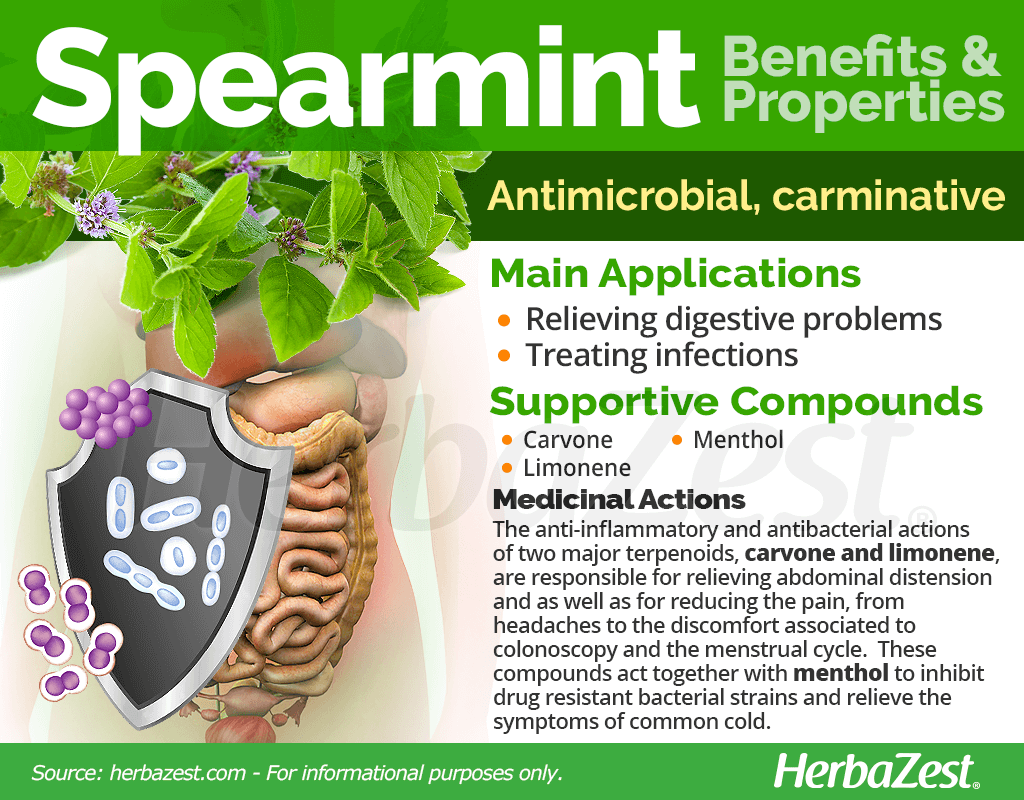
How to Consume Spearmint
Spearmint leaves have a wide variety of uses. They can be picked and consumed right off the stem, steeped in a warm and delicious herbal tea, used to flavor water, or even cocktails. They can also be added to salads, fish, fruit, or meat dishes, or made into vinegar, jelly, or sauce. However, in order to make the most of spearmint benefits, it is best to consume the herb in medicinal forms.
In many cultures around the world, spearmint is a flavor popularly paired with lamb dishes.
Natural Forms
Fresh. The fresh leaves of spearmint can be used in salads, dips, and pesto as well as in sorbets, naturally flavored water, and mocktails, in order to enjoy the refreshing flavor and digestive benefits of the herb.
Cooked. In many culinary traditions, spearmint is used as an ingredient to flavor soups and stews, in a way that allows for an optimal absorption of its healing compounds.
Infusion. This is the most popular way of getting the carminative and antimicrobial properties of spearmint. A warm spearmint tea, made from fresh or dried leaves, can help with indigestion, flatulence, gastritis, and common cold symptoms.
Herbal Remedies & Supplements
Essential oil. Obtained from fresh spearmint leaves, this essential oil is used as a soothing agent in aromatherapy and can be also diluted in water for oral ingestion, in order to treat a number of digestive complains.
- Capsules. Dried and powdered, spearmint leaves also come in capsules to be taken in medicinal doses. This is a practical way to obtain spearmint benefits.
- Edible parts Leaves
- Edible uses Condiment, Beverage
- Taste Aromatic
Growing
Spearmint is highly adaptable herb that grows all over the world; however, it prefers cool temperate climates. It is an easy plant to grow, ideal for those who are new to gardening; however, spearmint require some basic care to thrive.
Growing Guidelines
Spearmint can be cultivated either by seeds or cuttings, and it spreads rather quickly by use of runners. In fact, it's good to choose carefully where mint is planted, because it is known to become invasive if not well-maintained.
Spearmint prefers wet and moist soils as well as plenty of sun. Excessive moisture, heat, and cold as well as dry spells should be avoided, since these often promote disease or poor essential oil quality.
It is recommendable to prune spearmint after flowering, which usually occurs from summer to early fall.
The most common pests that attack spearmint are leaf hoppers and caterpillars, whereas rust and leaf spot are diseases that often attack this plant.
- Life cycle Perennial
- Harvested parts Leaves
- Light requirements Full sun
- Soil Well-drained
- Soil pH 6.1 – 6.5 (Slightly acidic), 6.6 – 7.3 (Neutral)
- Growing habitat Cool temperate regions, Temperate climates
- USDA Plant Hardiness Zones 4a, 4b, 5a, 5b, 6a, 6b, 7a, 7b, 8a, 8b, 9a, 9b, 10a, 10b, 11a, 11b
- Planting time Right after last frost
- Potential insect pests Leafhoppers, Caterpillars
- Potential diseases Leaf spot, Rust
Additional Information
Plant Biology
Spearmint (Mentha spicata) is a perennial plant characterized by oblong or lance-shaped serrated leaves and a tapering cluster of small purplish flowers. Spearmint grows upright about one to three feet (30 - 100 cm) in height on a square stem. Its fragrant, green leaves are pointed, spiked on the edges, and grow to be about two inches (5 cm) in length. It is topped with two to four inches (5 - 10 cm) tall stalks of white or pale purple flowers. Although many varieties of mint sharesimilar characteristics, such as jagged, bright green leaves, spearmint's distinct aroma and flowers separates it from its relatives.
Classification
Mentha spicata is a member of the large Lamiaceae family, which comprises over 240 genera and 6,500 species all around the world. Other economically important herbs in the Lamiaceae family are basil (Ocimun basilicum), oregano (Origanum vulgare), peppermint (Mentha piperita), rosemary (Rosmarinus officinalis), sage (Salvia officinalis), skullcap (Scutellaria lateriflora), thyme (Thymus vulgaris), lemon balm (Melissa officinalis), lavender (Lavandula officinalis), muña (Minthostachys mollis), and marjoram (Origanum majorana).
Varieties and Subspecies
There are about 30 species of mint (genus Mentha) and somewhere around 500 different varieties, cultivars, and hybrids collectively sold as "mint." Field mint (M. arvensis) is similar to spearmint, with the exception of the cooling menthol ingredient and white flowers. Most gardens are home to the crispa variety of M. spicata, which was previously thought to be its own species. Another common mint native to Europe is M. pulegium,which has even smaller leaves and its own particular scent. Thanks to the ease of hybridization, there are many interesting flavors of mint varieties, such as pineapple and chocolate (Mentha suaveolens 'Variegata' and Mentha x piperita, respectively).
Historical Information
Spearmint first applications can be traced to the Ancient Greece, when it was used to clean banqueting tables and added to baths as an aromatic stimulant. Romans used it as a flavoring in dishes, as an aid to digestion and as a mouth freshener. After Romans brought mint to Britain, it was extensively used by monks during medieval times for culinary and medicinal purposes. Is most likely that the different varieties of mint, including spearmint, were brought to North America by the first pilgrims.
Spearmint was used in Ancient Greece and Ancient Rome as a breath freshener and a cure for hiccups.
Popular Beliefs
In the past, mint was a powerful symbol of hospitality, being strewn around Greek and Roman parties and festivals to welcome guests.
Economic Data
The United States seems to hold the top spot for worldwide cultivation of spearmint, though it can be found growing in many places around the world. While spearmint is less popular than its relative, peppermint (Mentha x piperita), it has enjoyed a similar high production value in the United States, even rising by 87% between 1972 and 1994. Its extensive use as in ingredient in numerous products make it very economically important.
Other Uses
Industrial uses. Spearmint essential oil is a common ingredient in mouthwashes, toothpastes, gums, candies, liquors, and even bug repellents.
Aromatherapy and cosmetics. Spearmint is a common ingredient in aromatherapy and cosmetic industry, making its way into potpourris and scented accessories as well as cleansing facials and lotions.
- Other uses Cosmetics, Repellent
Sources
- Handbook of Herbs and Spices, Spearmint, pp. 502-519
- Herb Society of America
- Herb Society UK, Herb Fact Sheet, Mint
- Medlineplus, Spearmint
- Molecules, The Wonderful Activities of the Genus Mentha: Not Only Antioxidant Properties
- Penn State University, Spearmint
- University of Arizona, Spearmint
- USDA Plants Database, Peppermint and Spearmint: An Economic Assessment of the Feasibility of Providing Multiple-Peril Crop Insurance
- Medicinal Plants of the World, pp. 207
- The Herb Book, pp. 270-1
- Evidence-based Complementary and Alternative Medicine, Biological Properties and Bioactive Components of Mentha spicata L. Essential Oil: Focus on Potential Benefits in the Treatment of Obesity, Alzheimer's Disease, Dermatophytosis, and Drug-Resistant Infections, 2019
- Royal Horticultural Society, Mentha spicata spearmint
Footnotes
- Journal of Traditional and Complementary Medicine. (2021). Mentha spicata L. essential oil, phytochemistry and its effectiveness in flatulence. Retrieved August 19, 2024, from: https://www.ncbi.nlm.nih.gov/pmc/articles/PMC7936090/
- Microbios. (2001). Inhibition by the essential oils of peppermint and spearmint of the growth of pathogenic bacteria. Retrieved August 19, 2024, from: https://pubmed.ncbi.nlm.nih.gov/11549238/
- Pharmacy (Basel). (2023). Revisiting the Therapeutic Effects of Essential Oils on the Oral Microbiome. Retrieved August 19, 2024, from: https://www.ncbi.nlm.nih.gov/pmc/articles/PMC9958697/
